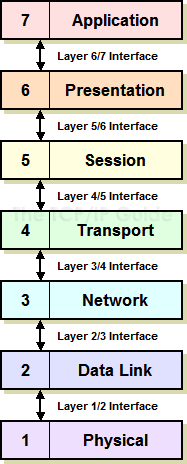 |
|
Please Whitelist This Site?
I know everyone hates ads. But please understand that I am providing premium content for free that takes hundreds of hours of time to research and write. I don't want to go to a pay-only model like some sites, but when more and more people block ads, I end up working for free. And I have a family to support, just like you. :)
If you like The TCP/IP Guide, please consider the download version. It's priced very economically and you can read all of it in a convenient format without ads.
If you want to use this site for free, I'd be grateful if you could add the site to the whitelist for Adblock. To do so, just open the Adblock menu and select "Disable on tcpipguide.com". Or go to the Tools menu and select "Adblock Plus Preferences...". Then click "Add Filter..." at the bottom, and add this string: "@@||tcpipguide.com^$document". Then just click OK.
Thanks for your understanding!
Sincerely, Charles Kozierok
Author and Publisher, The TCP/IP Guide
|
|
|

Custom Search
|
 |
The TCP/IP Guide 9 The Open System Interconnection (OSI) Reference Model 9 Key OSI Reference Model Concepts |
|
Interfaces: Vertical (Adjacent Layer) Communication
(Page 1 of 2)
The seven layers of the OSI Reference Model are used to split up the various functions that are required to implement a networking system. On any given device in a network, different software and hardware routines and devices may be functioning on any or all of these layers simultaneously. Since in general, all of these are supposed to be working together to implement networking functions, there is a need for layers to communicate vertically between the layers within a particular host.
In OSI Reference Model parlance, the mechanism for communication between adjacent layers in the model is called an interface. Of course, the term “interface” is also used widely in other contexts in the computer and networking worlds, since its generic meaning refers to connecting just about anything together. However, when someone talks about an interface between OSI model layers, that person typically refers to the process by which data is passed between layer N of the model and layer N-1 or layer N+1.
These relationships are demonstrated in Figure 13. For example, the layer 2/3 interface is used by a layer two and layer three protocol to pass data and control information; the layer 3/4 interface connects layers 3 and 4 together.
|
Vertical communication is done up and down the protocol stack every time anything is sent across the network, and of course, whenever anything is received. This occurs because the higher levels are implemented as logical functions, in software; there is no actual physical connection. The higher layers package data and send it down to the lower layers for it to be sent across the network. At the very lowest level, the data is sent over the network. On the receiving end, the process is reversed, with the data traveling back up to the higher layers on the receiving device. The next topic dealing with horizontal communication explains more about this logical interaction between corresponding layers.
|
|
| |||||||||||||||||||
Home - Table Of Contents - Contact Us
The TCP/IP Guide (http://www.TCPIPGuide.com)
Version 3.0 - Version Date: September 20, 2005
© Copyright 2001-2005 Charles M. Kozierok. All Rights Reserved.
Not responsible for any loss resulting from the use of this site.






 Note: Remember that not all layers may be implemented in every system or protocol stack in the “real world”. So it's possible that a process that is technically running at layer 7 might communicate with one running at layer 5. However, I am talking about the theoretical model here.
Note: Remember that not all layers may be implemented in every system or protocol stack in the “real world”. So it's possible that a process that is technically running at layer 7 might communicate with one running at layer 5. However, I am talking about the theoretical model here.